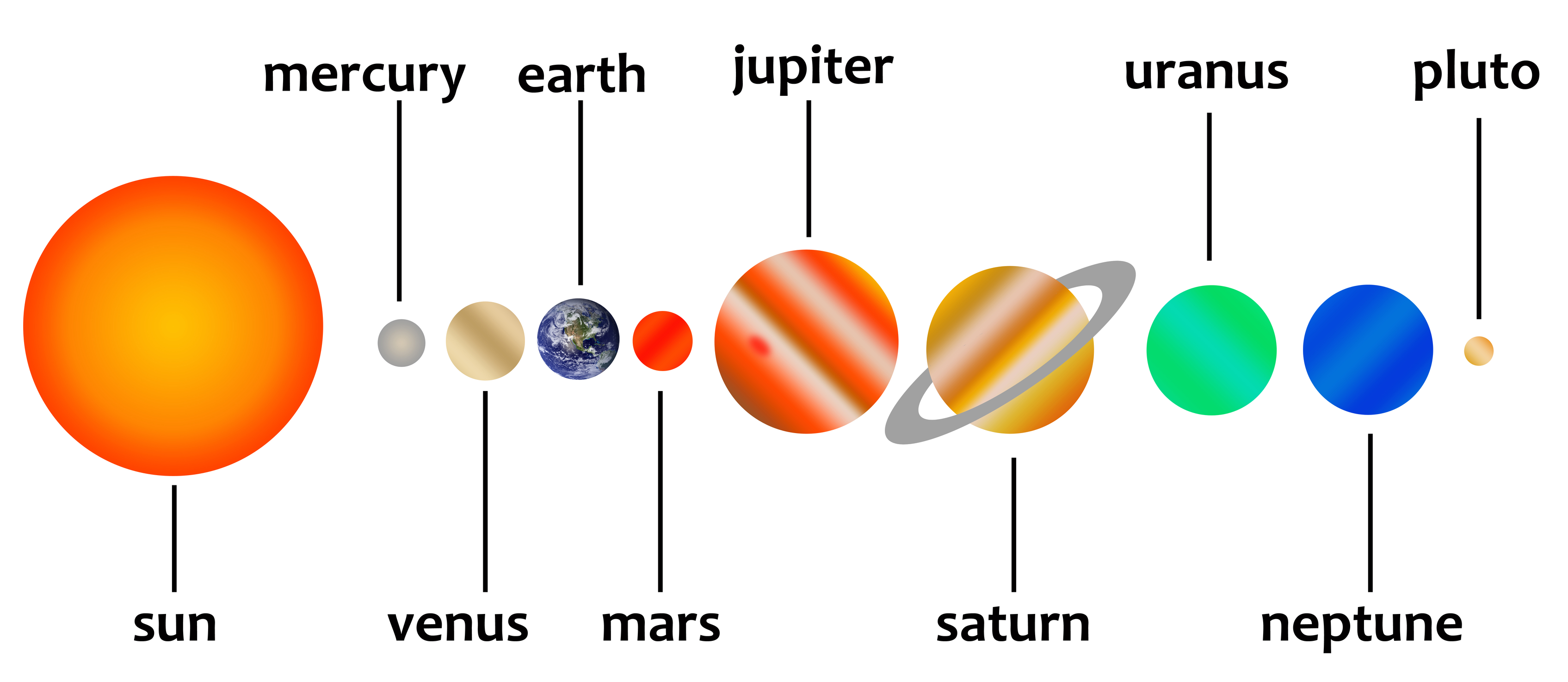Planets In Order Of Size Printable Gallery of NASA Solar System Images Our solar system is made up of a star the Sun eight planets more than 140 moons a bunch of comets asteroids and space rocks ice and several dwarf planets such as Pluto
Our solar system can be divided into three regions the inner solar system the outer solar system and the Kuiper Belt and Oort Cloud The inner rocky planets are Mercury Venus Earth and Mars These worlds also are known as terrestrial planets because they have solid surfaces Mercury Earth and Mars are currently being explored by spacecraft The Planets in Order by Size Planets With the Most Moons Planets in Order From the Sun Mercury 0 39 AU from the sun Venus 0 72 AU Earth 1 00 AU Mars 1 52 AU Jupiter 5 20 AU Saturn 9 54 AU Uranus 19 20 AU Neptune 30 06 AU
Planets In Order Of Size Printable
 Planets In Order Of Size Printable
Planets In Order Of Size Printable
https://3.bp.blogspot.com/-rVnF2DDOnuI/Vtg6cRcR6vI/AAAAAAAAAQU/PfG830L0f-s/s1600/planet.png
Help children learn about the order of the planets with this amazing Solar System Chart Poster It also shows the comparative sizes of different planets and stars so kids can get a better sense of how big they are Show more
Pre-crafted templates offer a time-saving option for developing a varied range of documents and files. These pre-designed formats and layouts can be made use of for various personal and expert tasks, consisting of resumes, invites, flyers, newsletters, reports, presentations, and more, improving the content production procedure.
Planets In Order Of Size Printable

Printable Planets To Color Printable World Holiday

The Solar System Activities Twinkl Homework Help Twinkl

Printable Planets To Scale

Solar System Planets Facts

All The Planets Of Solar System Clip Art page 4 Pics About Space

Free Printable Hands on Activity Which Allows Kids To See The

https://science.nasa.gov/resource/solar-system-sizes
Outward from the Sun the planets are Mercury Venus Earth Mars Jupiter Saturn Uranus and Neptune followed by the dwarf planet Pluto Jupiter s diameter is about 11 times that of the Earth s and the Sun s diameter is about 10 times Jupiter s Pluto s diameter is slightly less than one fifth of Earth s

https://3boysandadog.com/free-solar-system-printables
What is the order of the planets in the solar system The vast expanse that comprises our solar system is home to eight planets each with its own distinct characteristics and qualities These planets can be viewed in the order of their distance from the sun Mercury Venus Earth Mars Jupiter Saturn Uranus and Neptune

https://informal.jpl.nasa.gov/museum/sites/default
Mercury Actual Size 4 900 km 3 000 mi diameter Scaled Size 3 4 mm 0 14 Average distance from Sun 0 4 AU Scaled Distance from Sun 42 m 48 yd Venus Actual Size 12 100 km 7 500 mi diameter Scaled Size 8 6 mm 0 34 Average distance from Sun 0 7 AU Scaled Distance from Sun 75 m 84 yd Earth

https://www.universetoday.com/36649
Planets in our Solar system size comparison Largest to smallest are pictured left to right top to bottom Jupiter Saturn Uranus Neptune Earth Venus Mars Mercury Via Wikimedia Commons

https://timvandevall.com/science/list-of-planets-in-order
Answer The planets in the Solar System are arranged in the following order Starting with the planet closest to the sun we have Mercury Venus Earth Mars Jupiter Saturn Uranus and Neptune In 2006 Pluto was demoted
Children can cut out the planets colour them in and then glue them in the correct order on the included solar system sheet Each planet is a different size to reflect their real size Saturn and Uranus are both drawn with planetary rings while the continents of Size of Planets in Order The planets in our solar system are each very unique for various reasons When it comes to their measurable sizes in diameter the planets vary greatly Jupiter for example is approximately 11 times the diameter of the Earth Mercury on the other hand is 2 6 times smaller in diameter than the Earth
Free Printable Solar System Cut Outs Share the love These free printable solar system cut outs are a fun and simple way to really learn about our sun planets and so much more